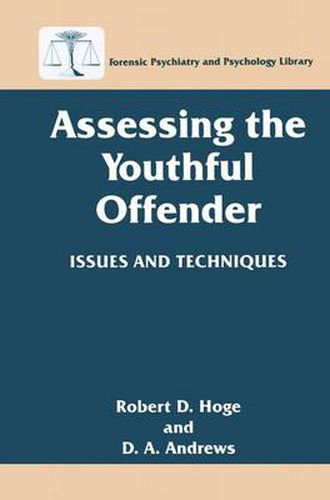Readings Newsletter
Become a Readings Member to make your shopping experience even easier.
Sign in or sign up for free!
You’re not far away from qualifying for FREE standard shipping within Australia
You’ve qualified for FREE standard shipping within Australia
The cart is loading…






This title is printed to order. This book may have been self-published. If so, we cannot guarantee the quality of the content. In the main most books will have gone through the editing process however some may not. We therefore suggest that you be aware of this before ordering this book. If in doubt check either the author or publisher’s details as we are unable to accept any returns unless they are faulty. Please contact us if you have any questions.
This important work educates individuals working within the youth justice system of the usefulness-and-limitations-of psychological assessments in the processing of youthful offenders. The authors favor a child welfare and rehabilitative approach, but they argue that the use of valid assessments can improve the quality and consistency of judgments and inferences made about youths in any system by improving the quality of the information used. The book closes with extensive recommendations and appendices listing instruments, procedures, and resources.
$9.00 standard shipping within Australia
FREE standard shipping within Australia for orders over $100.00
Express & International shipping calculated at checkout
This title is printed to order. This book may have been self-published. If so, we cannot guarantee the quality of the content. In the main most books will have gone through the editing process however some may not. We therefore suggest that you be aware of this before ordering this book. If in doubt check either the author or publisher’s details as we are unable to accept any returns unless they are faulty. Please contact us if you have any questions.
This important work educates individuals working within the youth justice system of the usefulness-and-limitations-of psychological assessments in the processing of youthful offenders. The authors favor a child welfare and rehabilitative approach, but they argue that the use of valid assessments can improve the quality and consistency of judgments and inferences made about youths in any system by improving the quality of the information used. The book closes with extensive recommendations and appendices listing instruments, procedures, and resources.